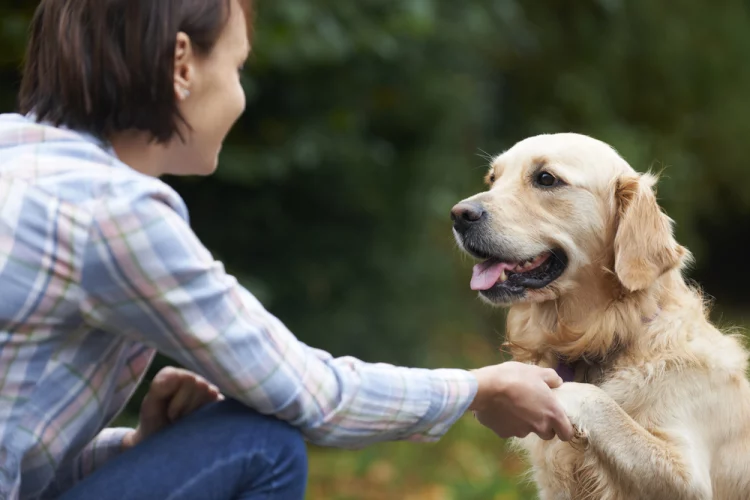Dog Language Dogs are social animals that live together, so they need a dog language to get along. How dogs communicate with each other is based on a common signaling system. But dogs don’t speak, so their “language” consists of other signals — mostly body language, such as ear and tail movement and positioning, and how dogs position themselves near other dogs.
The ancestors of dogs survived by communicating to form hunting together, co-protecting the young and protecting the territory from outsiders. While two dogs can get along, the more dogs that join a group, the greater the chances of an argument. Constant fighting and damage weakens the team. Survival depends on each dog in the group — and the puppy, so staying healthy will make your dog team healthier and longer. Dog language does more than just allow dogs to communicate and understand each other. It’s also a system for conflict resolution, including calm signals that stop fighting.
In fact, once you understand how dogs communicate and how they interpret your verbal and silent body language, you can communicate better with your puppy. How Dogs Communicate Canine communication is a complex system of body language, vocalizations and even scent cues. These signals reinforce the dog’s social status in the group. Dogs are very flexible with their family members. That’s why it’s so important to socialize your puppy early and continue throughout his or her life. Your dog sees you — and the rest of the family and pets — as part of the family and acts accordingly.

Why It Matters Many behavioral problems stem from normal dog behavior such as chewing, barking, etc. Often, while we think we’re clear to our pets by leading and vocalizing: we’re not actually communicating in a way our dogs can understand. Even if your communication with your pet may seem obvious to you, it is often like trying to understand a foreign language for a dog. They can only explain the best way they know. If you want the owner-dog relationship to reach its full potential, it’s most important to understand how dogs communicate so you can teach them more effectively. Don’t expect a puppy (or an adult dog) to automatically understand and read your mind. Puppies make behavioral mistakes because they don’t know right or wrong, and it’s often the communication failure on our side! Language Type Compared to your puppy, humans are deaf and smell blind. This leaves us unable to understand some of the more subtle signals of canine language. But by paying close attention to the body language and obvious vocal cues our pets give us, we can learn to interpret the more obvious canine signals. Dogs have evolved with the ability to pay close attention to the humans they love. So, given the chance, your puppy will meet you halfway through and learn a great deal of human vocabulary, especially when words, tone, and training effort are used consistently. Dogs use body language, vocalizations, and smells alone or in combination.
Each type of communication has advantages and disadvantages.
- Body language is one of the main ways pets communicate. Body language can be so subtle that even seasoned dog owners miss cues from time to time. Knowing the movements and positions of the eyes, ears, tail, and body, and the various implications, is very important to understanding your pet. As subtle as it may seem, body language is one of the few ways that dogs communicate with us! Dogs have spent centuries trying to understand humans in order to please them. We can do more to try to understand them. The more time you spend socializing with your pet, walking, and consciously paying attention to your dog’s body language, the more your dog will understand what its owner is saying.
- Sound can travel a long distance. Howling, barking, barking, growling, and growling are easier to understand in dogs. However, the bark may warn opponents and pack members, so it is not effective for stealth communication. The bark can convey many different messages, such as excitement, fear, need for food or water, and more.
- Odor signals do not require the presence of dogs to convey information. A dog’s urine smell can leave a urination odor to alert other dogs of their presence. It is normal for a dog to leave an anal gland odor behind when he defeces, or in situations where the dog is extremely stressed or frightened, the anal glands may secrete and leave a lingering smell. Dogs use combined signals to convey meaning. Basically, canine communication is used to reduce the distance between individuals with signals that demand attention (eg, wagging a puppy’s tail), or for signals like growling between individuals with a warning.























































